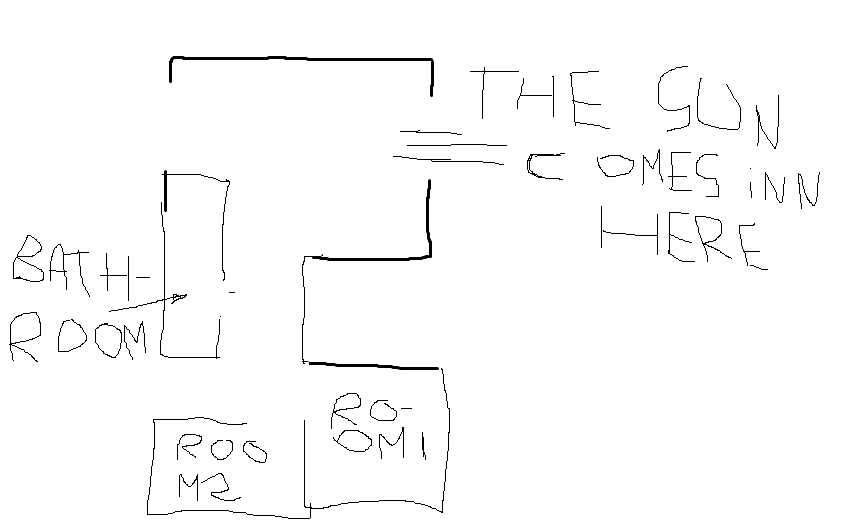Hi Mia,
I would recommend either Clinique Even Better or EL Idealist Skin Illuminating Serum during the day and Retin-A alone at night (and moisturizer if needed). Clinique Turnoraund Serum will be too much together with Retin-A.
Both Clinique Even Better and EL Idealist Skin Illuminating Serum have Ascorbyl Glucoside (I would estimate 1-2%) and an all-in -one serum. They also have a better consistency, more creamy but light feel on the skin than the one that Mac has. (Mac is another EL brand BTW). In humid/warm climate you can even wear any of them directly under your sunscreen without the additional moisturizer.
(I found a serum from Roc Multi Correxion Skin Renewing Serum, that also contain Ascorbyl Glucoside for half the price of Clinique. The structure is an overall poorer version of the EL Co. developed ones. It also has only added minerals and no other anti-oxidants.)
PS: You can also make a Vitamin C - L-Ascorbic Acid- containing serum on your own with a few ingredients obtained from the pharmacy).
Hope it helps.
Kindest regards,
Eva
Ingredients for Roc Multi Correxion Skin Renewing SerumWater, Cyclopentasiloxane, Glycerin, Tetrahydroxypropyl Ethylenediamine, Dimethicone Crosspolymer, Dimethicone, Ammonium Acryloyldimethyltaurate/VP Copolymer, Nylon-12, Ascorbyl Glucoside, Retinol, Tocopherol, PEG- 12 Dimethicone, Copper Gluconate, Magnesium Aspartate, Zinc Gluconate, Titanium Dioxide, Citric Acid, Phenoxyethanol, Pentylene Glycol, Butylene Glycol, Laureth-23, Bisabolol, Laureth-4, Methylparaben, Propylparaben, Ethylparaben, Polyacrylamide, Sodium Hydroxide, Disodium EDTA, BHT, C13-14 Isoparaffin, Polysorbate-20, Hydroxyphenyl Propamidobenzoic Acid, Ascorbic Acid (Vitamin C), Laureth-7, Mica, Fragrance
Ingredients for Clinique Even Better SerumWater, Dimethicone, Isododecane, Cyclopentasiloxane, Polysilicone-11, Butylene Glycol, Ascorbyl Glucoside, PEG-10 Dimethicone, Turmeric Root Extract, Rice Bran Extract, Grapefruit Peel Extract, Barley Extract, Wheat Germ Extract, Birch Bark Extract, Cucumber Fruit Extract, Dimethoxytolyl Propylresorcinol, Scutellaria Baicalensis Root Extract, Mulberry Root Extract, Trametes Versicolor Extract, Saccharomyces Lysate Extract, Yeast Extract, PEG-6, Tromethamine, Salicylic Acid, Polysorbate 20, Cholesterol, Isohexadecane, Propylene Glycol Dicaprate, Sunflower Seedcake, Caffeine, Tocopheryl Acetate, Acetyl Glucosamine, Simethicone, Glycyrrhetinic Acid, Polysorbate 80, Sodium Hyaluronate, Di-C12-18 Alkyl Dimonium Chloride, Sodium RNA, Squalane, Sodium Sulfite, Sodium Metabisulfite, Caprylyl Glycol, Hexylene Glycol, Ammonium Acryloyldimethyltaurate VP/Copolymer, Acrylamide/Sodium Acryloyldimethyltaurate Copolymer, Disodium EDTA, Phenoxyethanol, Yellow 6, Yellow 5
Ingredients for EL Idealist Skin Illuminating SerumWater, Dimethicone, Isododecane, Cyclopentasiloxane, Polysilicone-11, Butylene Glycol, Ascorbyl Glucoside, PEG-10 Dimethicone, Gentiana Lutea (Gentian) Root Extract, Oryza Sativa (Rice) Bran Extract, Hydrolyzed Rice Bran Extract, Curcuma Longa (Turmeric) Root Extract, Citrus Grandis (Grapefruit) Peel Extract, Triticum Vulgare (Wheat) Germ Extract, Cucumis Sativus (Cucumber) Fruit Extract, Scutellaria Baicalensis Root Extract, Morus Bombycis (Mulberry) Root Extract, Trametes Versicolor Extract, Hordeum Vulgare (Barley) Extract, Salicylic Acid, Caffeine, Cholesterol, Acetyl Glucosamine, Squalane, Yeast Extract, Helianthus Annuus (Sunflower) Seedcake, Isohexadecane, PEG-6, Dimethoxytolyl Propylresorcinol, Tocopheryl Acetate, Propylene Glycol Dicaprate, Polysorbate 20, Glycyrrhetinic Acid, Polysorbate 80, Sodium Hyaluronate, Sodium Sulfite, Sodium Metabisulfite, Acrylamide/Sodium Acryloyldimethyltaurate Copolymer, Ammonium Acryloyldimethyltaurate/VP Copolymer, Caprylyl Glycol, Hexylene Glycol, Potassium Sorbate, Di-C12-18 Alkyl Dimonium Chloride, Fragrance, Tromethamine, Tin Oxide, Sodium Hydroxide, Disodium EDTA, BHT, Phenoxyethanol, Linalool, Limonene, Mica, Titanium Dioxide, Bismuth Oxychloride, Carmine
HI Eva,
You are very helpful  Thank you for the specific product recs you offer.
Thank you for the specific product recs you offer.
Are either of the Cliniques an all-I-need type of serum? One that I could wear every day under my s/s and be done with it? (I alternate taz and Retin-A at night. Currently no serum at night, but that could change if you were to so suggest). I have no pressing skin concerns; just want to protect, maintain & enhance my basically healthy (N/CO) complexion.
Another serum I was considering is MAC Prep + Prime Brightening Serum:
Ingredients: Water, Butylene Glycol, Glycerin, Ascorbyl Glucoside, Caffeine, Tocopherol, Sodium Hyaluronate, Squalane, Green Tea Leaf Extract, Gentian Root Extract, Tuberose Extract, Hydrolyzed Rice Bran Extract, Silk Powder, Tourmaline, Xanthan Gum, Caprylyl Glycol, Phenyl Trimethicone, Hexylene Glycol, Pentylene Glycol, Magnesium Chloride, Potassium Hydroxide, Acrylates/C10-30 Alkyl Acrylates Crosspolymer, Polyglyceryl-5 Oleate, Calcium Chloride, Sodium Sulfate, Potassium Nitrate, Citric Acid, Fragrance, Sodium Citrate, Phenoxyethanol, Potassium Sorbate, Chlorphenesin, Sodium Benzoate
Your thoughts/recommendations/suggestions are greatly appreciated, as always!
Best,
Mia
Hi Mia,
It is a classic emulsion emulsified with Arlacel 165 (PEG-100 Stearate, Glyceryl Stearate) and stabilized with carbomer. It certainly has enough emollients* and humectants as well! The firming ingredients Hydrolyzed Rice Protein, Soybean Protein, Adenosine along with Palmitoyl Oligopeptide.
(* unless Glyceryl Polymethacrylate, Palmitoyl Oligopeptide correspond to Sederma Biopeptide CL and they did not add additional Glyceryl Polymethacrylate. Then it has a lot of different emollients in a miniscule amount. If it is more like a light moisturizer then it can aid moisturizing the skin.)
Palmitoyl Oligopeptide has firming effect and has shown that it is to provide protection of collagen fibers against environmental aggressors. Crithmum Maritimum Extract can correspond to Aerolat Samphira that is said to creates a finer skin, decreases lines and wrinkles, and provides a homogenous and luminous complexion. It also has a positive effect on sebum regulation. Note that neither Palmitoyl Oligopeptide nor Aerolat Samphira is present in a greater amount.
It has Vitamin E, B5 and some Royal Jelly Extract for nourishment.
What I really miss is the presence of other anti-oxidants that are a must in today's products with the technology available. I think the nice finish of this formulation comes from the amount of silicone (Cyclohexasiloxane) it contains. This you can also have from far better serums.
The Even Better Serum (with stabilized Vitamin C: Ascorbyl Glucoside) or Turnaround Concentrate (with Lactobionic Acid) from Clinique are literally packed with skin-boosting anti-oxidants and cell communicating ingredients. The more expensive version of Even Better Serum is Idealist Even Skin Tone Illuminator that has a bit of TiO2 and Mica added as colourants and shine enhancers, and some additional anti-oxidants but is an identical product to the one from Clinique.
All these serums have plenty of silicone (even the emulsifying system are based on very good silicone-emulsifiers from Shin Etsu Japan) that provides a very pleasant finish. It is such a success among consumers that the Estee Lauder Companies have used the same serum base (silicone-emulsifier system from Shin Etsu and a polymer from Seppic) for all their new serums (Origins, Lab Series, Clinique for Men etc).
Hope it was of some help. 
Kindest regards,
Eva













































